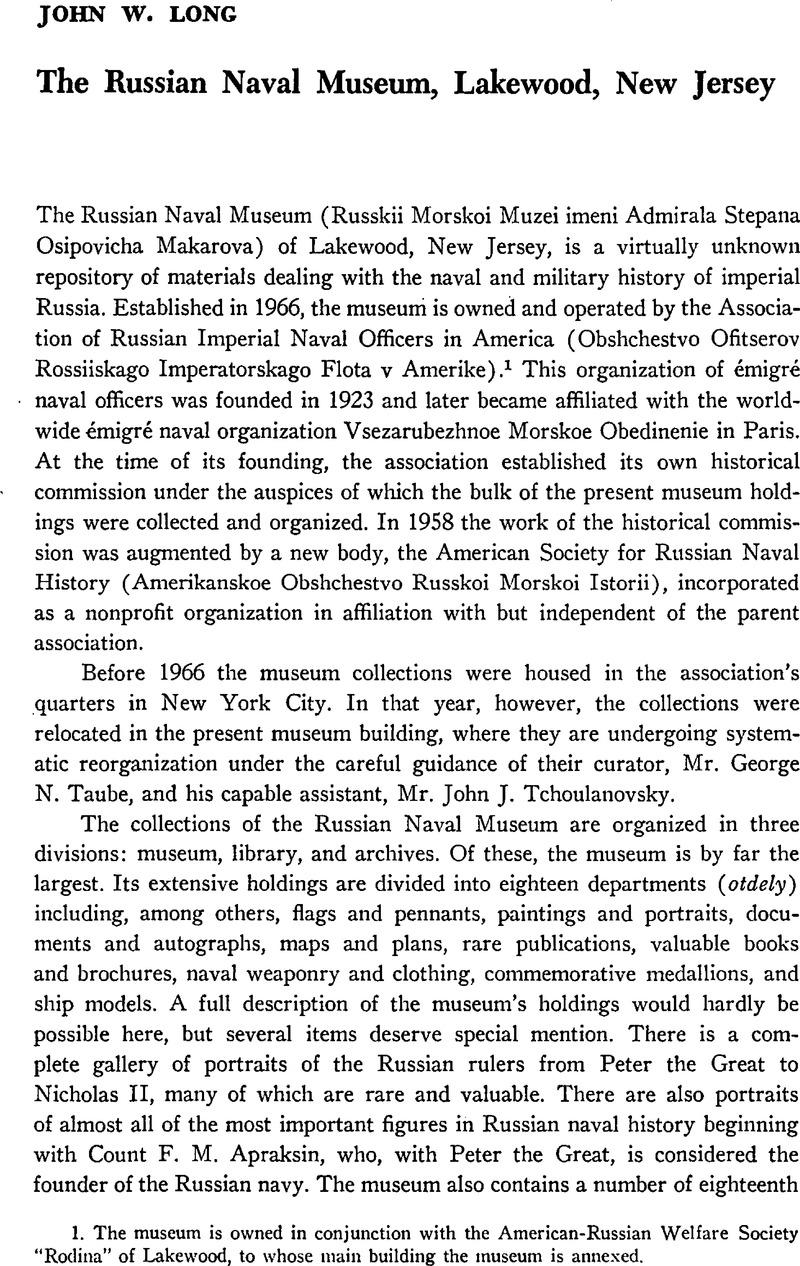Article contents
The Russian Naval Museum, Lakewood, New Jersey
Published online by Cambridge University Press: 27 January 2017
Abstract

- Type
- Notes and Comment
- Information
- Copyright
- Copyright © Association for Slavic, East European, and Eurasian Studies. 1971
References
1. The museum is owned in conjunction with the American-Russian Welfare Society “Rodina” of Lakewood, to whose main building the museum is annexed.
2. An interesting recent addition to the museum is a fan presented as a memento by the delegates at the Congress of Berlin in 1878 to Baroness Fredericks, who served at the congress as personal secretary to her father, Prince A. M. Gorchakov, minister of foreign affairs and head of the Russian delegation. The fan bears the signatures of all the leading representatives at Berlin, including Disraeli, Bismarck, Gorchakov, and others, and was donated by Captain D. J. Daragan of Helsinki.
3. The army collection is under the care of Mr. V. P. Seletsky. Persons interested in information about the collection should contact Mr. V. V. Pojidaeff, Director of Public Relations, American-Russian Welfare Society “Rodina,” R.D. No. 2, Alexander Avenue, Lakewood, New Jersey 08701.
4. Published irregularly over a period of twenty-two years, Morskiia zapiski contains numerous articles of great historical interest. Few libraries, however, have complete files of this valuable source. A limited number of copies of an author-title index of the journal ﹛Morskiia zapiski : Sistematicheskii i alfavitnyi ukasateli), covering the period 1943-63, are available on request from Curator Taube.
5. Library books do not circulate. Persons wishing to use the collection must either come to the museum or make arrangements for photoduplication.
6. Additional information on this important archival department must await the curator's reorganization. In his own research, however, dealing with the Civil War in North Russia, 1918-20, the author has found this department fruitful indeed, and has turned up, for example, the letters and papers of the assistant chief of the Murmansk Military Port, 1919-20, and the papers and materials of the captain of the (White) Onega Lake Flotilla, 1919-20. It is therefore recommended that anyone working in Russian military or naval history, especially of the period 1900-1921, look into the holdings of the archives in this department.
- 2
- Cited by




